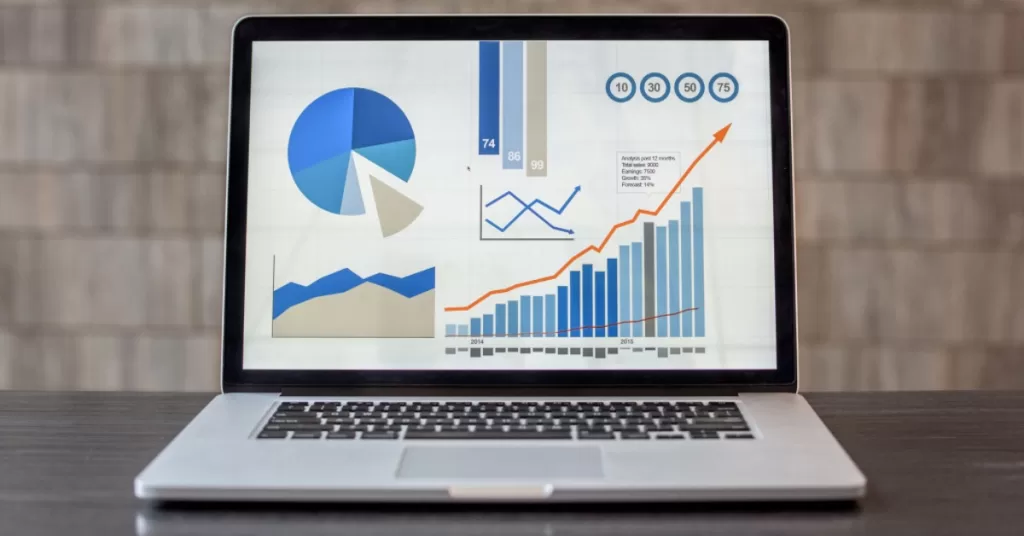The SaaS industry is moving extremely fast and there are always new challenges and opportunities. And SaaS KPIs are your best friends when it comes to keeping you on the right track.
Understanding your company’s health goes beyond your gut feeling. It’s about knowing when to pivot and when to move forward with your original plans. To do this, you need data and you need to know what numbers to look at.
So let’s explore which SaaS KPIs you look at for different parts of your business to help you grow and scale your company.
Why SaaS KPIs Matter
Having your business goal or North Star metric is great! That means you know where you want to be in the long run. But you also need a way to track your progress towards your objective.
Consider KPIs as the health check of your plan. For example, let’s say that your business goal is to increase profitability. You have chosen to do this by increasing your ad platforms’ efficiency. You are looking to decrease the cost per acquisition (CPA) which will let you reach your goal.
So, you narrow down your ad campaigns across platforms and manage to reduce your CPA and increase your profit margin! That’s awesome! But, when look at the actual profit, you see that in absolute numbers, is lower. So you are making more profit per customer, but the amount of money hitting your bank account at the end of the month is lower.
Using KPIs will help you check your progress towards your goal in smaller time intervals. Especially in SaaS, where everything takes longer, such as longer sales cycles or longer CAC payback periods. Besides this, KPIs allow you to:
Identify Growth Opportunities: Identify parts of your business that are thriving to double down on the strategies that make them work.
Spot Potential Problems: Recognize early warning signs, such as an uptick in churn or a downturn in customer satisfaction, and make necessary corrections.
Make Data-Driven Decisions: Eliminate the guesswork and rely on evidence-based insights to inform your product development, marketing, and sales strategies.
Track Progress Towards Goals: Monitor your progress against targets and benchmarks to
Communicate Effectively: KPIs are essential for clearly conveying your progress and performance to investors, stakeholders, and your internal team.
The Essential SaaS KPIs You Need to Track
Even though no two businesses are alike, the SaaS KPIs tend to be the same because, in the subscription industry, all companies face similar challenges. So, let’s look at different categories of KPIs and why they are important for your business.
Financial KPIs
Financial KPIs deliver insights into company profits, costs, and income. Saas businesses rely on subscription/recurring revenue, so tracking the financial health of the business is extremely important for their growth. By looking at these metrics you can determine if your business model is viable, if your revenue streams are steady, and if you’re spending efficiently.
Monthly Recurring Revenue (MRR): This is the bedrock of any Saas company. MRR represents the predictable monthly subscription revenue. Analyze new MRR, expansion MRR (upsells), and churned MRR to understand revenue trends.
Annual Recurring Revenue (ARR): This is the MRR expressed in annualized terms, giving you a long-term view of the revenue stream. This is crucial for making forecasts and strategic planning.
Customer Lifetime Value (CLTV): This is an estimate of the total income you’ll receive from a customer throughout the business relationship. A high CLTV indicates high levels of customer loyalty and possibly high profitability.
Customer Acquisition Cost (CAC): Measures the costs your company has to get a paying customer. Keeping the CAC lower than the CLTV is a must to maintain a healthy business model. To calculate CAC, you divide the sales and marketing costs by the number of new paying customers that you acquired.
Gross Profit Margin: Reflects how profitable your product or service is after deducting all costs associated with providing it. Keeping a healthy gross margin is important for long-term sustainability.
Customer-Centric KPIs
KPIs centered on the customer gauge how well a company holds onto its customers, engages its customers, and satisfies its customers. Because SaaS companies operate on a subscription model, customer satisfaction has a direct and immediate effect on revenue and churn. Let me put it this way: The happy, well-served user is the loyal user who renews, upgrades, and refers his friends. Tracking your customer-centric KPIs gets you halfway to “awesome” at customer support. Improving at that game, inherently, improves your overall retention.
Churn Rate: The percentage of customers who cancel their subscriptions in a given span of time. A low churn rate is of utmost importance for sustained growth. Segment churn analysis to pinpoint the precise nature of the problems.
Customer Retention Rate: This is the inverse of the churn rate and measures the percentage of customers who keep their subscriptions. Concentrate on tactics and strategies that not only retain customers but also enhance loyalty among them.
Customer Satisfaction (CSAT) Score: Customer satisfaction with your product or service is measured, often through surveys. A high CSAT score means that the customer is satisfied with your solutions.
Net Promoter Score (NPS): Measures customer loyalty and the probability that they’ll recommend your product. A high NPS is a good indicator of strong brand advocacy.
Product & Usage KPIs
It is essential to monitor user interaction with your SaaS product to ensure long-term success. Product and usage KPIs give you insights into what kinds of things customers are doing and aren’t doing within your product. More importantly, these KPIs gauge the kinds of features that are truly valuable to your customers—and which aren’t. You can use this knowledge to inform product development, increase user experience, and reduce churn.
Monthly Active Users (MAU) & Daily Active Users (DAU): Track the number of users who actively interact with your product on a monthly and daily basis. These figures speak to how “sticky” or how well adopted your product is.
Average Revenue Per User (ARPU): Assesses the typical earnings from each user. Segment ARPU to find potential areas for upselling and cross-selling.
Feature Usage: Knowing which features are most and least used helps focus product development and optimize user experience.
Sales & Marketing KPIs
To attract appropriate customers and convert leads swiftly, a successful SaaS company must fine-tune its sales and marketing endeavors. The effectiveness of their campaigns, the efficiency of their sales teams, and the conversion rates at various points in the customer journey are indicated by sales and marketing KPIs. Keeping an eye on these metrics ensures that the marketing budgets are hitting the mark and that the teams are focused on achieving a sustainable model for acquiring new customers.
Conversion Rate: The percentage of prospects or website visitors that convert into paying customers. To improve your conversion rates you can refine your sales funnel, optimize your landing pages, or create a growth hacking team.
Lead Generation: Monitor the quantity of leads produced through various channels to grasp the overall efficacy of your marketing initiatives.
Sales Cycle Length: Assess how long it takes to finish a deal. Reducing the time it takes to close a sale can significantly drive revenue growth acceleration.
Beyond the Basics: Advanced SaaS KPI Analysis
Tracking SaaS KPIs is great! But if you want to take a step further, you will need to study the relationship between them, as well. When chasing your company goal, you cannot change or improve one KPI and keep the rest at the same level.
For example, if you want to increase your profit margins, and you increase your price by 10%, you will achieve the goal. The revenue went up, the costs are the same, it’s a win, right? Well…not really.
You will have to look at some other KPIs:
- Is the churn rate higher? Did customers cancel their subscriptions because they thought it was too expensive?
- Did your CAC increase? Is it harder to convince people that your product is worth the price?
- Did the NPS decrease? Are people not as happy and not referring your product to their friends as often?
All these will have consequences that need to be measured. Because you can work on different parts of the business to counteract them.
Moreover, you can look at some other type of data or look at data in a different way. For example:
Cohort Analysis: Analyzing groups of customers who started using your product at the same time provides valuable insights into their behavior and lifecycle.
Benchmarking: Compare your KPIs to industry averages and competitors to identify areas for improvement and set realistic targets.
Expansion Revenue: Measures additional revenue generated from existing customers through upsells, cross-sells, and add-ons.
Customer Support Metrics: Tracking metrics like response time, resolution rate, and ticket volume can highlight areas where your customer service can improve. Excellent customer service is always attractive to new customers.
Conclusion
SaaS KPIs are more than just numbers; they are powerful tools that offer you a clear path to success. When you consistently keep an eye on these metrics—and better yet, when you dive into the analysis of what these metrics mean—you get insights that are truly valuable concerning your company’s performance.
And those insights allow you to make decisions that are much more reliable, in a business sense, than decisions based on gut feeling. And as you keep on this path of making data-driven decisions, your company moves toward sustainable growth.



